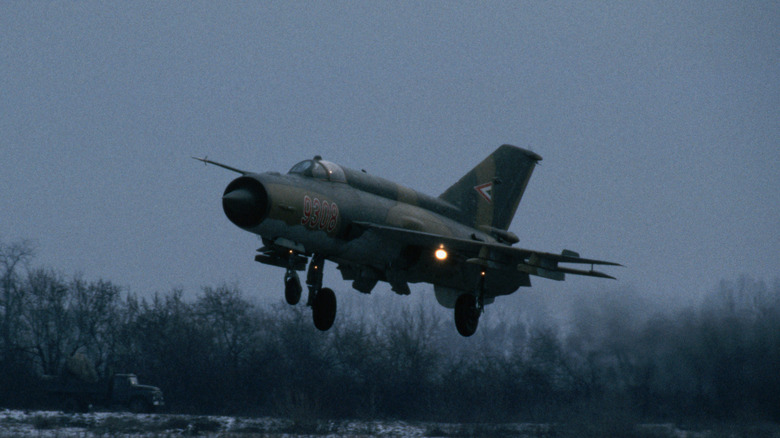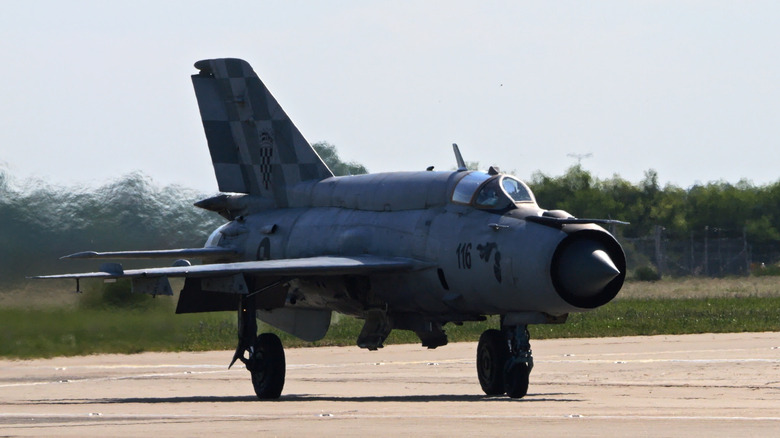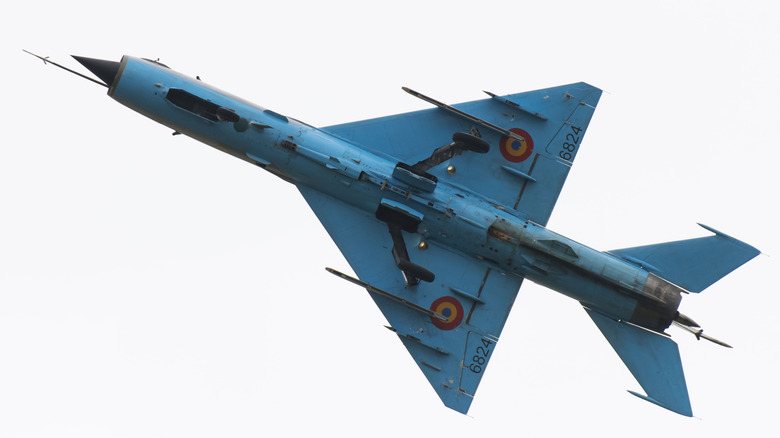Why Is Russia's MiG-21 Fighter Jet Called Fishbed?
In the history of aerial combat, the MiG-21 commands an illustrious history that falls in the same legacy pages as the ubiquitous AK-47 rifles. Introduced back in 1955, the MiG-21 was known for its high maneuverability, low operational costs, and suitability for short ground-controlled interception (GCI) missions. The company behind the 60-year-old MiG-21 has produced over a dozen iterations of it as warfare technology has evolved, but what remained an enigma was a rather random name assigned to the fighter jet.
By NATO's lexicon, the MiG-21 was assigned "Fishbed" as its generic name. One might assume there would be some cool historical incident or cheeky reason behind giving such an odd name to a supersonic jet with such a fearsome aerial record. Well, there's no such backstory behind the moniker. It was picked randomly. What really matters here is the first letter of the name. F, which stands for the "fighter jet" classification.
As Mikoyan-Gurevich, the company behind the fighter jet and what MiG stands for, developed more variants, NATO assigned more derivative names, such as MiG-21 Fishbed-A, MiG-21 Fishbed-B, MiG-21F Fishbed-C. A slight branching out happened within the past few decades when newer iterations were developed and went by names such as MiG-21 Lancer and Bison, among others. The Fishbed alias, however, has become synonymous with the MiG-21's legacy. Behind the random naming, however, is a tactical reason rooted deeply in warfare procedures.
Nothing too fishy here
The typical variant in the famed fighter jet family was generally called something like Mikoyan-Gurevich MiG-21PF. Saying a name like that, especially for someone who struggles with the Russian language, is a chore. In warfare, where time is of the essence and everything has to follow a certain pattern, codenames are assigned. Fishbed, in this case, is the official reporting name picked by NATO. The group follows a standardized system, one that covers everything from fighter jets to transportation items.
"To carry out multinational operations, countries need to share a common set of standards –- rules or guidelines that ensure mutual understanding and practical functionality," NATO explains. The whole idea is to pick an easily identifiable name for smoother collaboration. In the context of warfare, a letter was picked for the aerial vehicle types. B designates bombers, H stands for helicopters, C is for cargo aircraft, and F is the chosen identifier for fighter jets.
The subsequent full name, starting with the assigned letter, was randomly chosen. According to a classified "top secret" document approved for release in 2003 by the CIA (downloads a PDF to your device), the system was predominantly put in place for equipment produced by China and countries that had signed the Warsaw Pact, which included the Soviet Union. Why Fishbed? Well, it seems to be a random word starting with the letter F. Just like other fighter jet names, such as Foxbat, Fencer, Fiddler, Flogger, Flagon, Faithless, and Fishbot.
A few other names for the MiG-21
Since the Russian government never gave it an official identifier name aside from the MiG-21 label, it earned a couple nicknames. Balalaika is one, which is a stringed musical instrument with a wide triangular body. It also earned names like "Ołówek," which is Polish for pencil, given due to the similarity with the jet's fuselage shape. Another local epithet for the MiG-21 — used in Vietnam — was the "Silver Swallow." The Type-77 variant used by the Indian Air Force earned itself the "Runway Busters" sobriquet.
Interestingly, a similar naming system is also followed by the United States Air Force, though the names have kept changing over time as more categories and types of combat vehicles were developed. The Department of Defense catalogues assets by their specific codenames, but armed units give them their own unique designations and internal nicknames. The F-11 went by Tiger, F-10 was named Sky Knight, F-9 picked up the Cougar epithet, while the F-8 was popularly known as Crusader.
After 1962, as per guidelines established by the DoD, the technical names such as F-3, H-65, and C-45 entered the mainstream lexicon in the US. As far as the MiG-21 goes, the fighter jet is finally seeing the curtains fall on its celebrated history. The final batch of MiG-21 fighter jets was retired from active operational duties in Europe in late 2024. In India, a long-time partner of Russia, the jet's Bison variant will be phased out soon.


